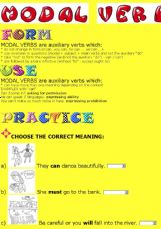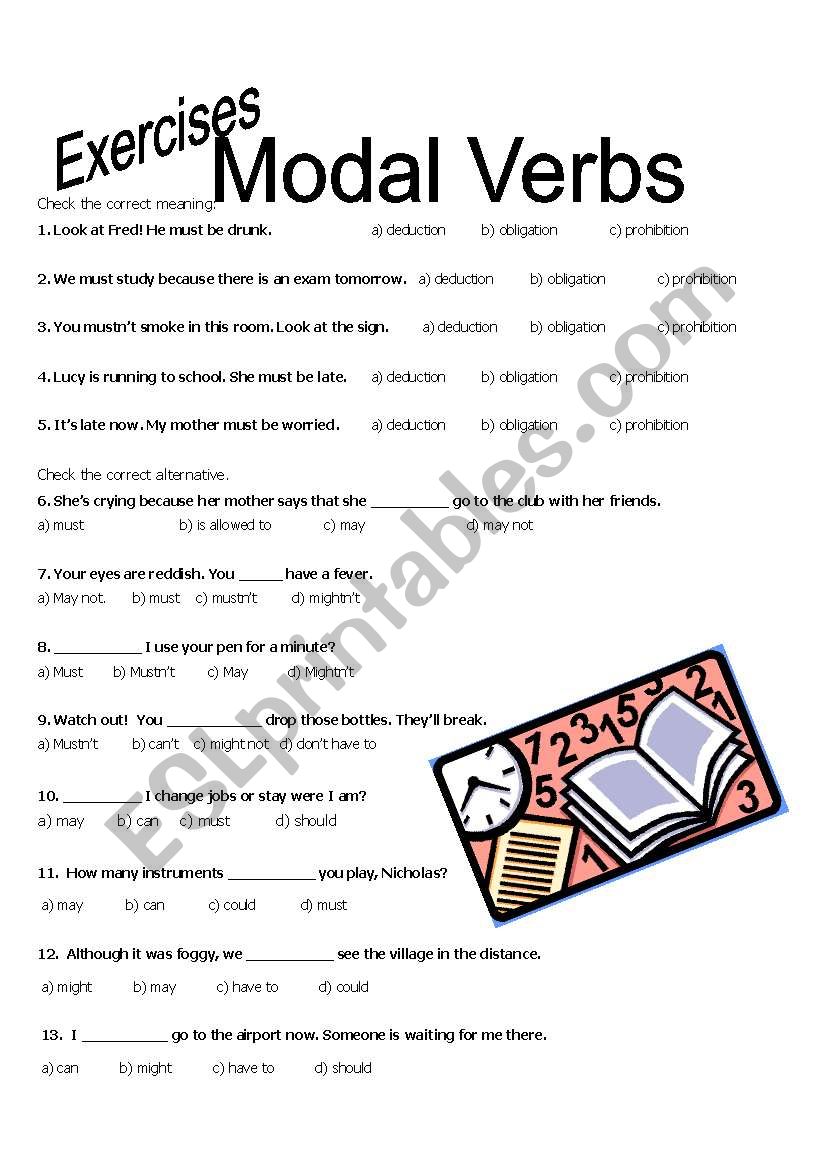
This approach is the CELTA through and through really. ‘Guided discovery, also known as an inductive approach, is a technique where a teacher provides examples of a language item and helps the learners to find the rules themselves’ Here’s a quote from the British Council website:

This works well with text-based presentation lessons’ (tip copyright IH Budapest) ‘Use a guided discovery worksheet, containing questions about meaning, form and pronunciation. On the ‘ lesson frameworks’ page in my training booklet, I saw this tip for making lessons more student-centred:
#Esol modal verbs exercises how to#
After learning how to design a text-based presentation a few days before, I decided to scrap the textbook and make my own text to introduce the aforementioned grammar point. We were using Cutting Edge as a class textbook on the CELTA. What made that lesson so effective? Well it wasn’t the best I taught during the course, but it really showed that I’d listened to the tutors and tried hard to put one of the input sessions into practice. I’d just finished a class on the present perfect continuous, which makes my CELTA grade all the more special as teaching grammar remains my biggest weakness. If I could pinpoint the exact moment that my trainers gave me that mark, I’d say it was Tuesday, Week 4, about 12pm, just after Teaching Practice 7. Without some experience of being in front of people and presenting information I would have really struggled, but this wasn’t much of a concern for the less neurotic people on the course!Īnyhow, teaching experience was not the only contributing factor to my A grade. I am a really nervous person, and this trait has plagued me for a long time. I find one of the hardest things about teaching is actually standing up and doing it. I got an A in my CELTA, but I had some teaching experience before the course. 'Must ' does not exist in the past.Home › CELTA tips › CELTA tip: guided discovery IMPORTANT: The past form of 'have to' and 'must' is 'had to'. The negative form of 'must' expresses the idea that something is prohibited - this form is very different in meaning than the negative of 'have to'! The negative form of 'have to' expresses the idea that something is not required. This form is used only in the present and future. Use 'must' to express something that you or a person feels is necessary. NOTE: 'have to' is conjugated as a regular verb and therefore requires an auxiliary verb in the question form or negative.

Use 'have to' in the past, present, and future to express responsibility or necessity. Another variation on this game is for students to play the game in pairs.


In order to encourage students to favor the use of 'have to', spend the rest of the lesson focusing on daily responsibilities in the following exercises.Make sure to stress the idea that 'don't have to' expresses the idea that the person isn't required to do something but may do so if he/she would like while 'mustn't' expresses the idea of prohibition. Discuss the differences between 'don't have to' and 'mustn't'.Make sure to point out that 'have to' is used for daily routines while 'must' is used for strong personal obligation. Discuss the differences between 'have to' and 'must' in the positive form.Introduce the grammar by having the students take a look at the grammar sheet below.Have them make a list of five things that they have to do every day. Ask students to talk about their daily routines.


 0 kommentar(er)
0 kommentar(er)
